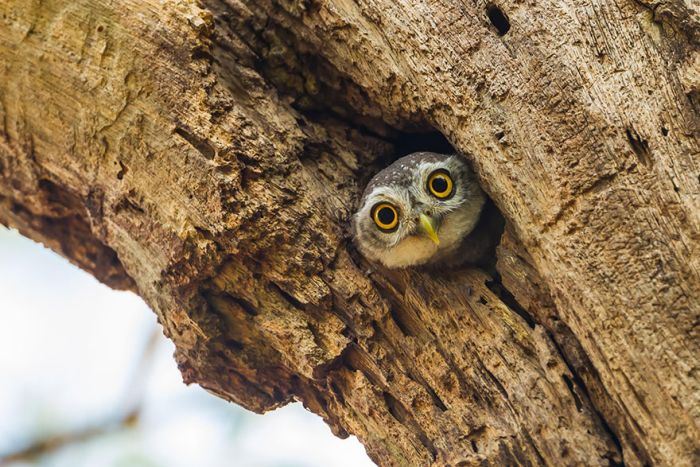|
|
Owl Birds
|
Description
Owls have large forward-facing eyes and ear-holes; a hawk-like beak; a flat face; and usually a conspicuous circle of feathers, a facial disc, around each eye. The feathers making up this disc can be adjusted for sharply focusing sounds that come from varying distances and those made by prospective prey, on the owls' asymmetrically placed ear cavities. Most birds of prey sport eyes on the sides of their heads, but the stereoscopic nature of the owl's forward-facing eyes permits the greater sense of depth perception necessary for low-light hunting. Although owls have binocular vision, their large eyes are fixed in their sockets — as are those of other birds — so they must turn their entire head to change views. Owls can rotate their heads and necks as much as 270 degrees in either direction. As owls are farsighted, they are unable to see clearly anything within a few centimeters of their eyes. Caught prey can be felt by owls with the use of filoplumes — small hair-like feathers on the beak and feet that act as "feelers". Their far vision, particularly in low light, is exceptionally good.
The smallest owl — weighing as little as 31 g (1.1 oz) and measuring some 13.5 cm (5.3 inches) — is the Elf Owl (Micrathene whitneyi). Some of the pygmy owls are scarcely larger. The largest owls are two of the eagle owls; the Eurasian Eagle Owl (Bubo bubo) and Blakiston's Fish Owl (Bubo blakistoni) — which may reach a size of 60 – 71 cm (28.4 in) long, and have a wingspan of almost 2 m (6.6 ft), and an average weight of nearly 4.5 kg (10 lb).
|
|









